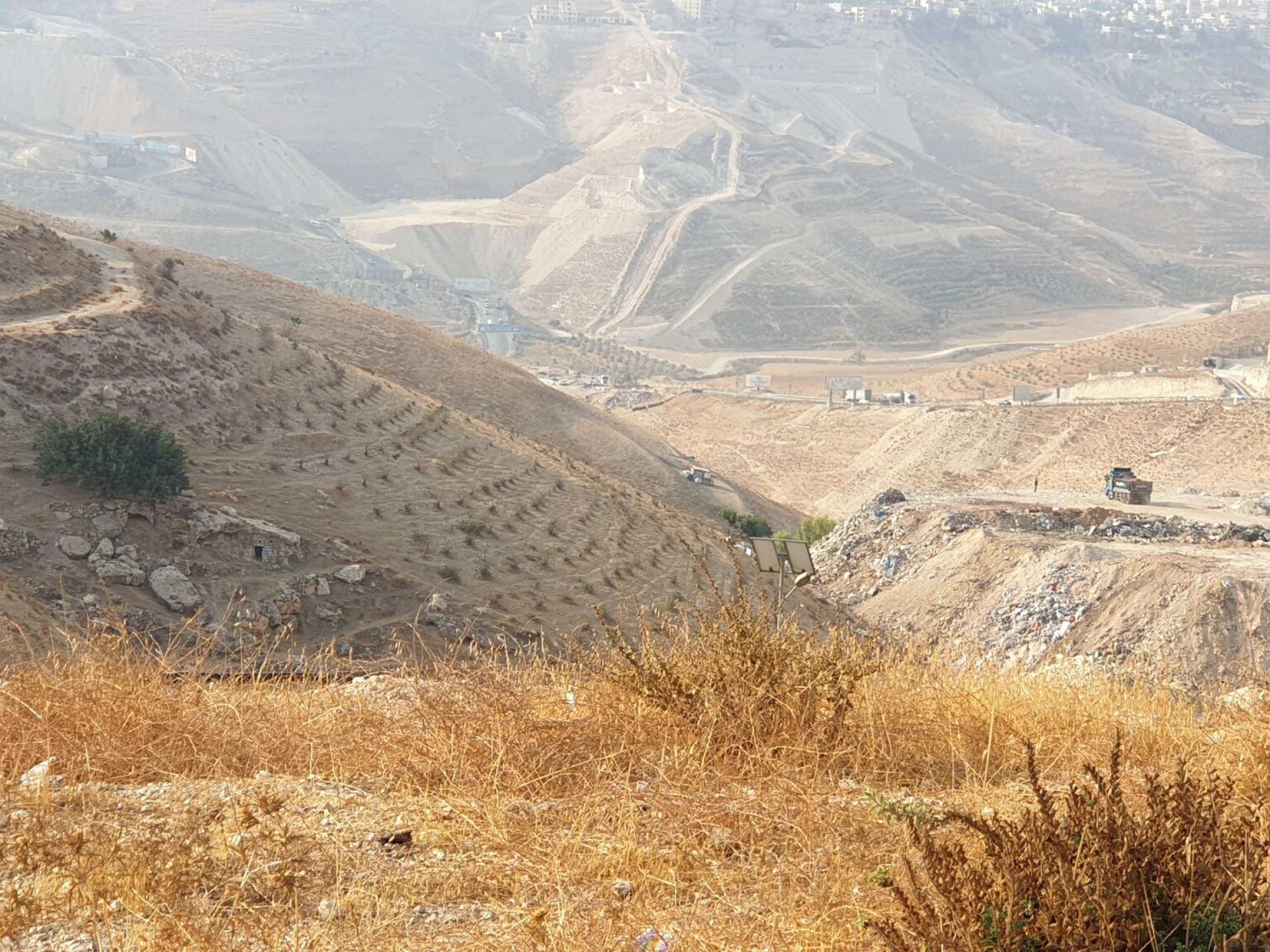'Anata-Shu'afat, Al-Ezariya, Bethlehem (300), Container (Wadi Nar), Nuaman (Mazmuria)
In congested Jerusalem the morning after the night attack in Kiryat Arba - two days before the elections.
Tunnels are dug in places where traffic for settlers crawls in the morning and evening - the Ramat Shlomo neighborhood bordering Beit Hanina up to road No. 1 going down to the Dead Sea (Ma'ale Adumim road) and on the Hebron road towards the southern American road. These will be tunnels only for holders of blue IDs
The only road for Palestinians from Ramallah to Bethlehem is still narrow, steep and winding up to the Wadi Nar checkpoint. The checkpoint was upgraded with soldiers and a cafe/convenience store instead of the small family grocery store. There are no donkeys tethered in what used to be a parking lot, but the dogs from the local dynasty still roam the road leading to the checkpoint.
At the Shuafat checkpoint, the procedures were changed after the attack on the checkpoint soldiers on the second eve of Sukkot. The internal barriers were removed a few days after the terrorist was captured.
Bethlehem checkpoint
7:00 Perhaps because of the fear of Israel's immediate reaction to the attack, the checkpoint is relatively empty and the passage is smooth. One position, a little way off, is open to women and men. In a conversation with the passers-by, it turns out that most of them are from Bethlehem. They say there is no closure on Hebron.
on Hebron.
Mazmuriya of Wadi Nar
A long queue of cars from the stuck road - Har Homa - to the Hebron road. The American way can perhaps shorten the time, but requires a detour through the Umm-Lissan and Jebel Mukabber neighborhoods. Only cars with Israeli license plates pass through the Mazmuriya checkpoint leading to Tuqu’, and the roads to the village of Mazmuriya are controlled as an entrance to Area A.
The only road leading Palestinians from the south of the West Bank to the north (in this part 4171) winds and reaches the Wadi Nar checkpoint (the container) for the passage of vehicles only. The soldiers chat to one another at the closed checkpoints, and traffic flows without inspection. Two female soldiers approach us, surprised that we are there . They have been here for two years in 8-hour shifts. They wanted to be combat soldiers. The well-remembered small grocery store was sold and turned into a cafe and convenience store. The nice old woman from the grocery store is dead, and so is her sick son. We buy exotic juices and sweets from Nablus at the cheapest price. A one-way bypass road overlooks the southern Keidar outpost (according to our knowledge, delusioned spiritualists live there and the soldiers who guard them) and the highly developed Keidar settlement. The way to them is blocked. Lampposts with broken solar panels are placed on the sides of the narrow road. Continuing in the direction of
Al-Ezariya, we pass several camps of the Jahalin, far from the concentration of the Bedouin tribe (expelled from E1) located near Al-Ezariya. You reach the section of the road which was renovated by the Americans in the hope that it ould become a main two-lane road along its entire length. With the collapse of the Oslo Accords, hopes were dashed.
Shuafat refugee camp checkpoint
We haven't been here since the attack on the Eve of Sukkot. The checkpoint area looks like an abandoned battlefield, stones and fire marks everywhere. Two internal checkpoints were stationed here before the main checkpoint, and they were removed after the killing of the terrorist, Tamimi, who came on foot for another attack at the entrance to Ma’ale Adumim. Kamal the driver knows his family, all residents of Jerusalem, and says he had no criminal or security record.
Kamal tells us on the drive about his own childhood in the Mughrabi neighborhood (near the Western Wall) above Silwan. Contrary to what we knew, he says that Hussein is the one who moved the residents of the neighborhood to the refugee camp before the Six Day War. Only a few residents remained there before the occupation of Jerusalem, and all the houses were destroyed by the Israelis a few days after the war to create the Western Wall plaza. For him, this links to a widespread conspiracy theory, that Hussein was coordinating with Israel before the war. The doubts we raise do not convince him, but he just nods. Palestinian etiquette..
The garbage, the overflowing garbage at the entrance to this checkpoint causes Natanya to say that she always asks herself when the moment will come when the garbage will block the entrance to pedestrians...

